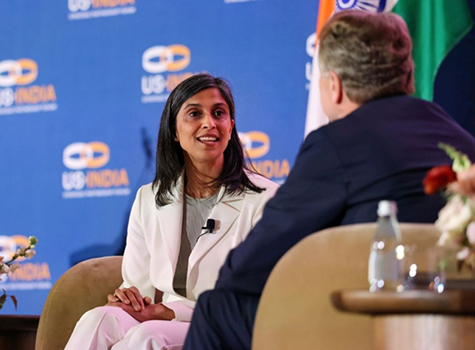
As we continue to celebrate so many festivals during this season, it makes sense to see why we have not only prayer rituals but also specific dances associated with these festivals. This way family, friends and local communities can gather to enjoy the company of old friends and make new friends.
I remember meeting so many wonderful people when I attended Dasara, or Diwali, or Baisakhi festivals. It is obvious that folk and community dances always have a marvelous way of lifting our spirits with their rhythms, and brilliant costumes.
These dances are usually performed in groups to highlight the social nature of such dance forms. There are many differences between classical, folk and community dance styles. Classical dances tend to be subject to a defined order, pre-set form, specific hand gestures, and explicit footwork. Most of these dances have to follow the rules and regulations established by the Natya Shastra tradition.
On the other hand, folk or community dances are very spontaneous, high energy, and allow much more flexibility in choreography or just do it as a free form. They are also the creation of people’s imagination and desire to bring communities together through music, dance and celebrations.
People of all ages, girls and boys, men and women, young and old come together to celebrate seasons, weddings, festivals, just to mention a few. They have a sense of freedom, with regional affinities and differences embodying within each material outward manifestation, a warmth of expression, and a charm and beauty that are very refreshing by their untutored and untrained quality.
Folk and community dances do not display an inclination towards a rigid form, instead the whole depiction of folk and community art is guided more by the subject of the songs that glorify nature and its seasons, or express traditional occupations or in praise of deities. In folk and community dances, we follow mostly traditions. The songs, dances and the moves have been handed down for generations.
I specifically remember the songs my mom would sing during the Bathukamma festival. This survival of oral tradition was unsupported by the written word, and was stabilized because of its tremendous sociological impact and basis. Through these arts, and customs, many traditions have been established. People were brought together to celebrate life in its many forms.
We all know about the origins of Garba, Raas, Bhangra, Gidda, Bathukamma, Kolattam dances, just to name a few. I wrote extensively about these folk and community dances in the past publications.
However, one of the unique examples of community festival dance is the Ratha Yatra, a chariot festival. My sister lived in Puri, Orissa. Here the festival holds immense significance among the Puri locals as well as other pilgrims and devotees.
The chariots on which the deities are taken to the temple are massive pieces of art that are adorned with numerous designs, flowers & patterns. During this festival, people dance, and sing, accompanied by musical instruments. Many other cultures practice across in the same way in several parts of the world, such as Asia, Europe and South America.
Some of the countries that celebrate similar festivals are Armenia, Greece, Peru, Argentina, Italy, most of the South America and so on. Many also carry Mother Mary during these processions.
Another unique community dance is called Lezim dance. This fascinating rhythmic dance is performed with a Lezim or a small mallet. This dance is named after a wooden idiophone to which thin metal discs are fitted to produce a jingling sound and the dancers use this as a part of the rhythm. Dholki, a drum instrument, is used as the main percussion music.
This dance is most popular in Maharashtra, and one can see it during festival times, performed in public squares, schools, and along the streets with processions. Groups of young boys and girls holding these Lezims in their hands do a very fine series of figure movements while they make sounds with the Lezim to the accompaniment of the drums. This is not an easy community dance. Our hands can tire easily.
With national consciousness of the arts growing from day to day, many of these beautiful expressive dances are coming to urban and international audiences and being received with enthusiasm and success they deserve. Now they are taking their rightful place along with the classical dances in the furtherance of our cultural heritage.
There is more demand now for precise movements, coordination among dancers, formations, costume color coordination, and exotic jewelry, along with heavy drumming and other percussion supporting the music.
I am not sure if we are just taking these folk and community dances to another level or are we losing the freedom these dances provide to enjoy and participate without any formal training. However, it is wonderful to see certain dance forms like Garba, Bonalu, Bathukamma, and Bhangra are still a large part of our social interaction among all ages.
———-
For questions or comments contact Maha via e-mail at: Gingrichmaha@gmail.com
Posted: Monday, November 1, 2021



